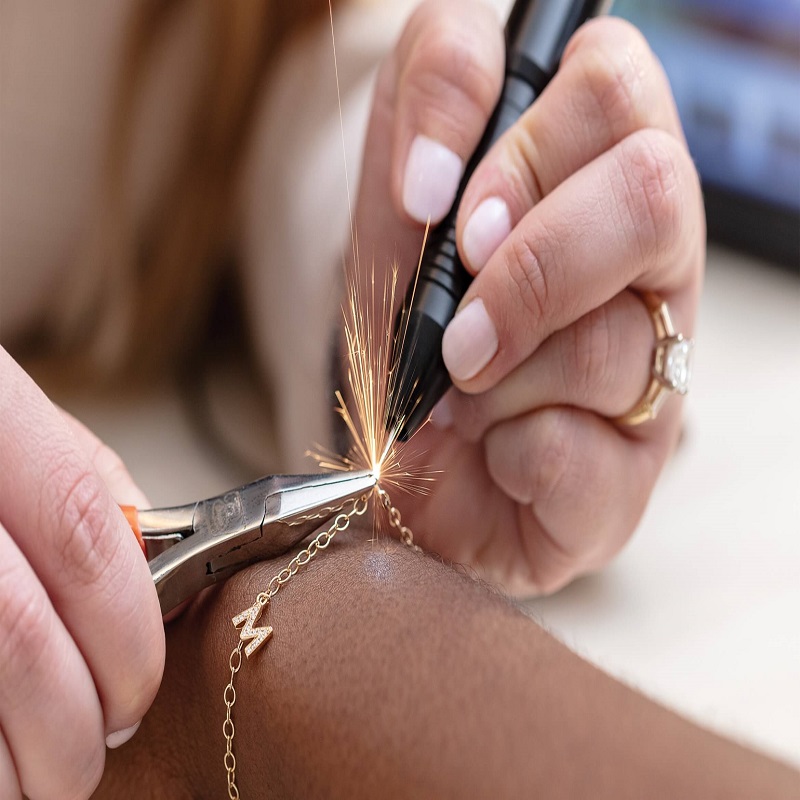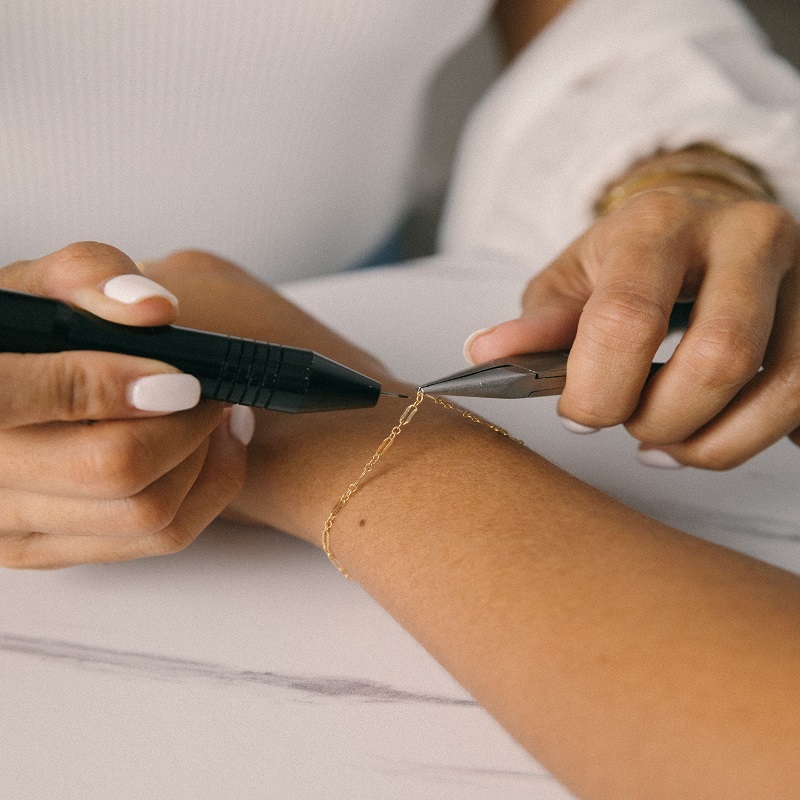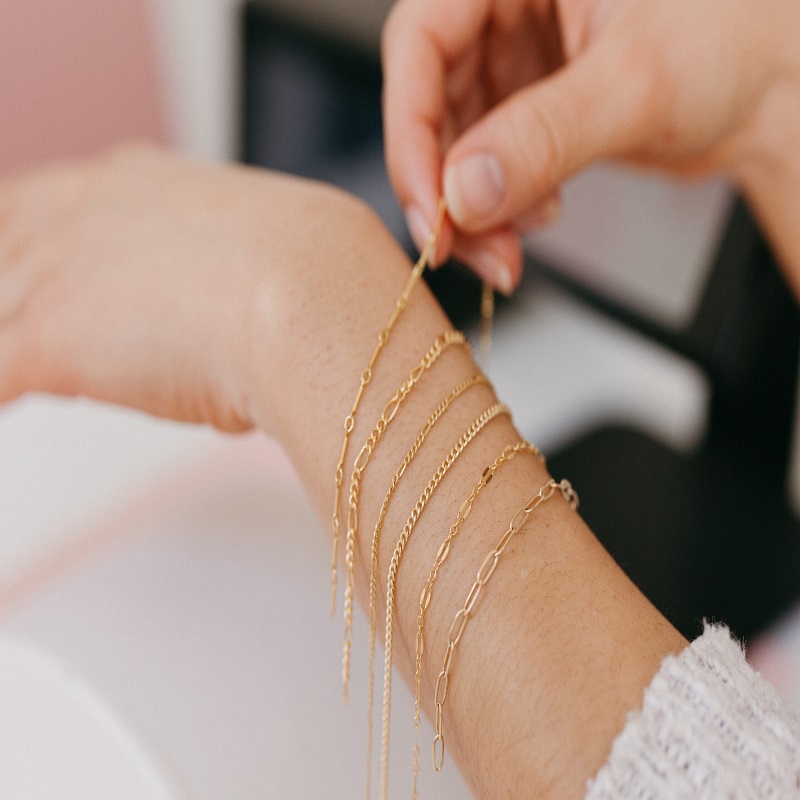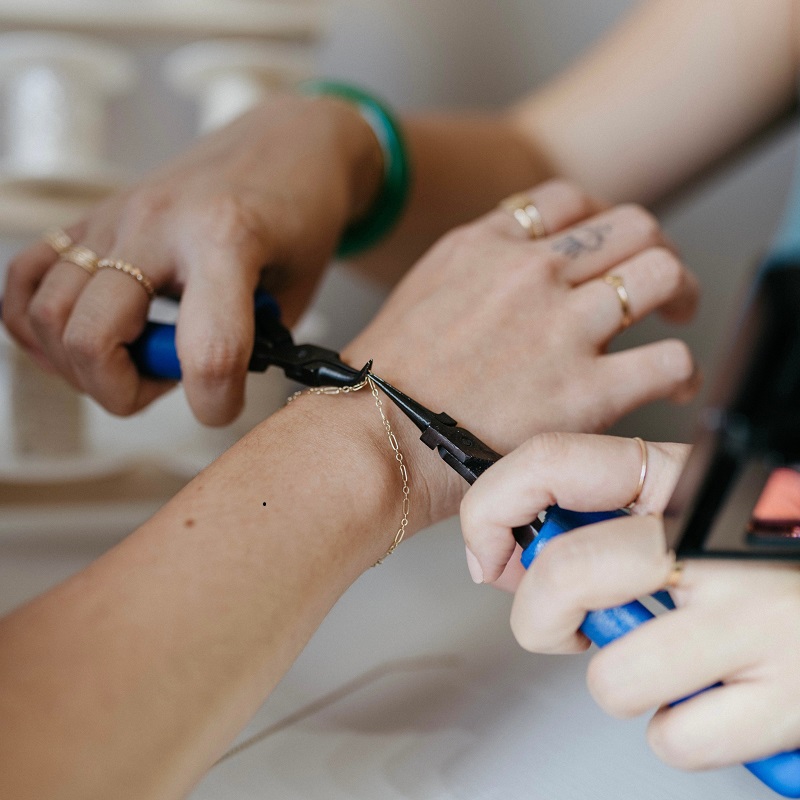How to remove permanent jewelry? Permanent jewelry can be a bold and stylish way to express yourself, but there may come a time when you want to remove it. Whether it’s due to a change in style, a job requirement, or personal reasons, it’s important to take the proper steps to safely remove permanent jewelry. In this guide, we will discuss various methods for removing permanent jewelry, including dermal piercings, dermal implants, and tattoos.

Removing Dermal Piercings:
Dermal piercings are unique as they don’t have a traditional entry and exit point like regular piercings. To remove a dermal piercing, it’s best to seek the assistance of a professional piercer or dermatologist. They will be able to use specialize tools to gently lift the jewelry out of the skin, minimizing discomfort and reducing the risk of scarring. Attempting to remove a dermal piercing on your own can lead to infection, scarring, or other complications, so it’s best to leave it to the professionals.
Removing Dermal Implants:
Dermal implants are another form of permanent jewelry that may need to be remove at some point. These implants are typically larger and more complex than dermal piercings, so proper removal is essential. Again, it’s important to consult a professional, such as a dermatologist or plastic surgeon, for safe removal. They will assess the implant and use the appropriate techniques to remove it without causing damage to the surrounding tissue. Trying to remove a dermal implant yourself can result in serious injury and scarring, so it’s crucial to seek professional help.
Removing Tattoos:
Tattoos are a popular form of permanent jewelry, but they are also one of the most challenging to remove. There are several methods for tattoo removal, including laser therapy, surgical excision, and skin abrasion. Laser therapy is one of the most common and effective methods for removing tattoos. It works by breaking up the ink particles in the skin, allowing the body to absorb and eliminate them over time. Surgery and skin abrasion are more invasive methods that involve physically removing the tattooed skin, but they may be necessary for larger or more elaborate tattoos.
Tips for Safe Removal:
Regardless of the type of permanent jewelry you’re removing, there are some general tips to keep in mind to ensure a safe and successful removal process. First and foremost, always seek professional help. Trying to remove permanent jewelry on your own can lead to infection, scarring, and other complications. Professional piercers, dermatologists, and plastic surgeons have the knowledge, experience, and tools necessary to safely remove permanent jewelry.
It’s also important to follow aftercare instructions provide by the professional performing the removal. This may include keeping the area clean and dry, using prescribe ointments or medications, and avoiding certain activities that could irritate the skin. By following these instructions, you can promote proper healing and reduce the risk of complications.
What are the styles of permanent jewelry
The term “permanent jewelry” refers to jewelry that is design to be worn on a permanent or semi-permanent basis. These pieces are typically made from high-quality materials and are design to last for a lifetime. Permanent jewelry comes in a wide variety of styles and designs, and there are many options to choose from.

Engagement Rings
Engagement rings are perhaps the most well-known type of permanent jewelry. These rings are typically given by one partner to the other as a symbol of their commitment and intention to marry. Engagement rings are often set with a precious gemstone, such as a diamond, and are traditionally worn on the ring finger of the left hand. While traditional diamond solitaire rings are a popular choice for engagement rings, there are many other options available, including three-stone rings, halo rings, and vintage-inspir designs. Some couples also opt for unconventional gemstones, such as sapphires, emeralds, or rubies, for a unique and personalize touch.
Wedding Bands
Wedding bands are another type of permanent jewelry that symbolizes the bond between two partners. These rings are traditionally exchange during the wedding ceremony and are worn on the ring finger of the left hand alongside the engagement ring. While wedding bands are often simple and understate, there are many options to choose from, including plain metal bands, diamond-accent bands, and personalize engrave bands. Some couples also choose to have matching wedding bands that complement each other in style and design.
Eternity Rings
Eternity rings are a beautiful and meaningful symbol of everlasting love and commitment. These rings are typically given to celebrate a milestone in a relationship, such as an anniversary or the birth of a child. Eternity rings are set with a continuous line of gemstones, such as diamonds or other precious stones, which symbolize the never-ending nature of love and devotion. These rings can be worn alongside the engagement ring and wedding band, or on a different finger for a stunning and eye-catching look.
Other Types of Permanent Jewelry
In addition to engagement rings, wedding bands, and eternity rings, there are many other types of permanent jewelry that are popular among brighton jewelry. These include necklaces, bracelets, earrings, and more, all of which are design to be worn on a permanent or semi-permanent basis. When choosing permanent jewelry, it is important to consider personal style, lifestyle, and budget in order to find the perfect piece that will be cherish for years to come.

Advantages of permanent jewelry
A Unique and Personal Statement
One of the primary advantages of permanent jewelry is its ability to make a unique and personal statement. Unlike conventional jewelry, which can be easily removed or replaced, permanent jewelry becomes a part of who you are. Whether it’s a facial piercing, a dermal implant, or a tattoo, permanent jewelry allows individuals to express themselves in a way that is wholly their own. It can be a powerful form of self-expression, as the choices made in permanent jewelry reflect an individual’s personality, beliefs, and values. For many, this level of personalization and uniqueness is a major draw to permanent jewelry.
Convenience and Longevity
Another advantage of permanent jewelry is its convenience and longevity. Traditional jewelry often requires regular maintenance and care, as well as the risk of loss or damage. With permanent jewelry, these concerns are significantly reduced or eliminated altogether. Once the initial healing process is complete, individuals can enjoy their permanent jewelry without the need for constant attention or upkeep. This makes permanent jewelry an attractive option for those with busy lifestyles or those who simply prefer low-maintenance accessories. Additionally, the longevity of permanent jewelry means that individuals can enjoy their chosen adornments for years to come, without the need for replacement or repair.
Enhanced Self-Confidence
Permanent jewelry has the potential to enhance an individual’s self-confidence. By choosing to adorn themselves with permanent jewelry. People are making a bold statement about who they are and what they believe in. This act of self-expression can be empowering and can lead to a greater sense of self-confidence. It can also serve as a reminder of personal strength and resilience. Particularly in the case of tattoos that hold symbolic meaning for the wearer. Additionally, color jewelry can serve as a form of body modification. That helps individuals feel more comfortable in their own skin. For many, the act of choosing permanent jewelry is a transformative experience. That results in heightened self-esteem and self-assurance.

Conclusion:
Removing permanent jewelry requires careful consideration and proper technique. Whether you’re removing dermal piercings, dermal implants, or tattoos. It’s crucial to seek the assistance of a professional. Attempting to remove permanent jewelry on your own can lead to serious complications, including infection and scarring. By following the advice and tips provided in this guide. You can ensure a safe and successful removal process for your permanent jewelry.
